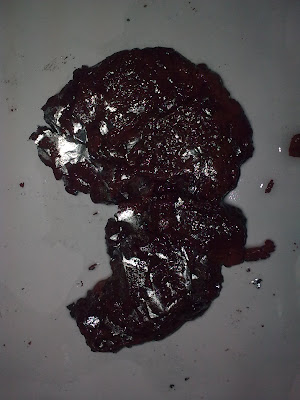Abortion is the termination of a pregnancy by the removal or expulsion from the uterus of a fetus or embryo, resulting in or caused by its death.
"A medical abortion is induced by two pills. These pills are usually administered to you in your second appointment; you'll likely be required to take the first pill while you're at the clinic. The second pill will be taken within 24 hours after the first pill. Results will feel similar to a miscarriage; heavy bleeding, cramping, and passing of blood clots. Many women choose a medical abortion because it is more private - they can have it in their own homes. However, a large percentage of women who have had more than one abortion choose surgical abortion the second time, as they claim it is much faster and less painful. Medical abortion is usually only available within the first 8 weeks of pregnancy.
A surgical abortion is done in the doctor's office, with a trained doctor and nurse present. It is incredibly short, usually over within 3-4 minutes. Local anesthetic is given to the woman's cervix, numbing it so that there is little or no feeling. Some clinics will offer to put women under completely (sedation), although this is usually unnecessary."
A surgical abortion is done in the doctor's office, with a trained doctor and nurse present. It is incredibly short, usually over within 3-4 minutes. Local anesthetic is given to the woman's cervix, numbing it so that there is little or no feeling. Some clinics will offer to put women under completely (sedation), although this is usually unnecessary."
Epic Article battle of Abortions!!!
In this corner,
Coming from
livestrong.com
it's Ken Chisholm with the PROS
VS.
In this corner,
Coming from
wolfpangloss.com
it's evanescent with the CONS
There are many reasons why abortion is a good and a bad thing to do. Some reasons why abortions should be allowed are;
- The women have been making the choice for a long time.
- Ultimately, she is the one who would be going through the actual "Labor" of continuing pregnancy, delivering a baby, bringing it up, parenting it well, in addition to other obligations she has to do in her daily life. It is hard to do this with little or no help from your partner.
- It's best to allow the mother to choose for her, WHEN she wants a baby.
- While we argue about the mental well being of a woman, how do others get to decide what would be more traumatic to the woman, abortion or; childbirth and the unending list of duties waiting to be accomplished.
- An attempt to restrict the abortions would rise not only the percentage of illegal and unsafe abortions but also the expenses of the procedure.
But there are also cons of having abortions;
- Most of unplanned pregnancies if extended to childbirth may prove to be wanted later.
- A growing embryo is considered human with the heartbeats initiating as early as 21st day of conception. So having an abortion is like murder.
- Choosing adoption as an alternative to abortion would give the baby its right to life.
- Infection, sepsis, recurrent miscarriages death could be the complications of abortions.
- Abortions can cause serious psychological impairment to the woman in the form of depression and guilt.
I think that Abortion is wrong because of the main reason that It is like murder.


 that they are replicating signals and are transmitting them through animal bodies. They send signals through tiny bubbles or capsules that are one beside another, and the signal is sent from one bubble to the next. This is transporting the signal through the body and telling it what to do.
that they are replicating signals and are transmitting them through animal bodies. They send signals through tiny bubbles or capsules that are one beside another, and the signal is sent from one bubble to the next. This is transporting the signal through the body and telling it what to do.












